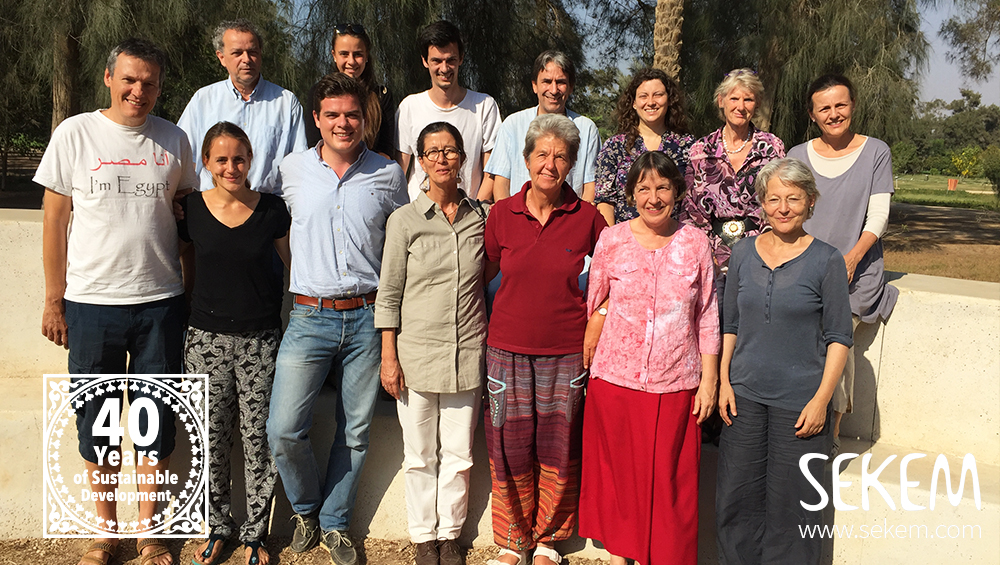After 40 years of visionary leadership the founder of SEKEM, Dr. Ibrahim Abouleish, has passed away during the holy month of Ramadan and leaves behind a legacy of a unique fourfold development initiative in the Egyptian desert. Many would suggest that this would mean difficult times for SEKEM that is anyway facing a tumultuous macroeconomic environment with not much stability. In addition to that, Ibrahim Abouleish was a very charismatic and strong leader, who kept the spiritual world and the earthly reality in harmonic balance. Is it possible to replace such a great man whose impact can be seen and felt in every little detail of SEKEM – from the placement of trees to the color of each small window, not to mention the invisible quality of the lasting impression he has left in many people’s hearts? We all know the answer…
“My father was never concerned about succession. He always knew that I was there to take over from him because I was prepared for this role all my life. The challenge of succession is left to me but the good thing is that our founding generation has still some years to sort this out with the new generation who is ready and prepared to share responsibility”, says SEKEM CEO Helmy Abouleish.
The need for organizational development
In the beginning of July, some SEKEM community members came together in a 3-days workshop to draw a picture of how to create a resilient and agile governance structure of SEKEM as a complex living ecosystem. The aim was to gain clarity on who is doing what and to break down the responsibilities in form of roles and circles and to fit this in the overall institutional, legal framework that also reflects actual decision making power distribution. What sounds like an easy task in the beginning requires a big amount of time and awareness. It is not enough to just map the existing structures but to continuously update it based on the perceived tensions of people who are filling specific roles.
Mapping SEKEM in different circles with different roles creates clear scopes of work that can be distributed to people according to their level of capacity and hence responsibility. This governance dimension goes hand-in-hand with an operational or tactical dimension that organizes meetings and follows up for practical needs in a very effective and efficient way. Again, these formants are designed to support SEKEMs purpose in the best way and to compensate for lack of human capacity, which is one of the major prevailing challenges.
Of course it would be much easier if one leader with a holistic overview and visionary alignment takes all decisions but with the size of SEKEM and the fast-changing environment we are living in, we cannot expect this from Helmy Abouleish. We have to create a system where enough guidance and clarity is provided to align SEKEMs co-workers to given priorities and transparent data and where decisions can be taken fast and efficiently at the place where they emerge.
SEKEMsophia – A strategic project is born
Being aware of our specific culture and context we are living in and building on elements of Holacracy (a complete system for self management, see more under: http://www.holacracy.org/) we call this emerging governance system SEKEMsophia. Different consciousness levels need different leadership styles, which goes hand-in-hand with governance structures and effects adequate scopes of responsibility. What is needed, where and what works well are the essential questions that we are going to ask ourselves persistently over the period of the coming year. Therefore, a project called SEKEMsophia was created with the aim to build an agile governance structure together with a holistic human development approach to become more successful and sustainably manage our succession. This will significantly change the social system of SEKEM and probably take years to come. But, this transformation is as much about honoring the past with its successful pioneering spirit of Ibrahim Abouleish as well as inviting the future with what wants to emerge with a new generation. This new phase is like a Firebird that raises out of the ashes from that huge leading light and integral giant that Ibrahim Abouleish truly was. From that perspective SEKEM does not have to be afraid of today’s challenging times but we can see in it the process of giving birth to the new.
This article is part of a series of articles accompanying the project SEKEMsophia and aims to share our collective development journey with our larger network of partners and friends.
Maximilian Abouleish-Boes
The holistic concept in a flower
SEKEM Holding Structure

